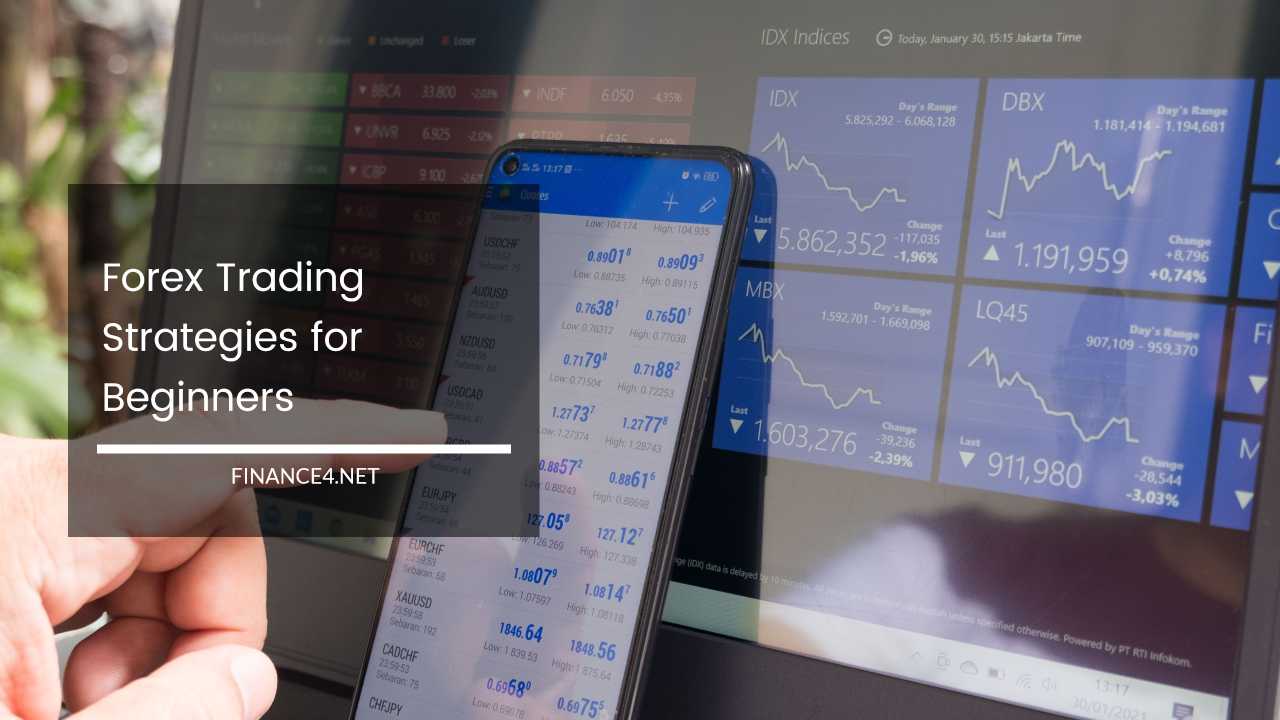Forex Trading Strategies for Beginners

Forex Trading Strategies for Beginners
Forex trading, short for foreign exchange trading, is the act of buying and selling currencies with the aim of profiting from fluctuations in their exchange rates.
It is one of the largest and most liquid financial markets globally, attracting traders from all over the world. For beginners entering the world of forex trading, it can be both exciting and overwhelming.
To succeed in this dynamic market, it is essential to have a well-thought-out trading strategy.
In this comprehensive guide, we will explore various forex trading strategies suitable for beginners to help them get started on their trading journey.
1. Understanding the Basics
Before diving into specific trading strategies, it is crucial for beginners to grasp the fundamental concepts of forex trading.
Key elements to understand include currency pairs, bid and ask prices, pips (percentage in point), leverage, and margin.
Additionally, becoming familiar with different types of orders, such as market orders, limit orders, and stop-loss orders, will aid in executing trades effectively.
2. Start with a Demo Account
For beginners, it is highly recommended to start trading with a demo account provided by most forex brokers.
A demo account allows you to practice trading with virtual money, giving you the opportunity to understand the platform, test different strategies, and gain confidence without risking real capital.
3. Trend Following Strategy
The trend-following strategy is one of the most popular approaches in forex trading. It involves identifying the direction of the prevailing trend and trading in the same direction.
Traders can use technical indicators such as Moving Averages, Moving Average Convergence Divergence (MACD), and the Parabolic SAR to identify trends and entry/exit points.
Pros:
- Aligns with the natural movement of the market
- Reduces the likelihood of trading against major trends
Cons:
- False signals can occur during ranging or sideways markets
- Requires continuous monitoring of the market to stay with the trend
4. Range Trading Strategy
Range trading is a strategy used when the market is consolidating and not trending in a particular direction.
In this approach, traders identify levels of support and resistance and enter trades when the price bounces between these levels.
Pros:
- Suitable for choppy or sideways markets
- Provides clear entry and exit points based on support and resistance levels
Cons:
- Can be challenging to identify precise support and resistance levels
- False breakouts can lead to losses
5. Breakout Strategy
The breakout strategy involves identifying key levels of support and resistance and trading when the price breaks out of these levels. Traders aim to catch strong price movements that occur after a period of consolidation.
Pros:
- Capitalizes on strong price movements and trend changes
- Provides clear entry and exit points based on breakout levels
Cons:
- False breakouts can result in losses
- Requires precise timing and quick execution
6. Carry Trade Strategy
The carry trade strategy involves borrowing funds in a currency with a low-interest rate and investing in a currency with a higher interest rate. Traders aim to profit from the interest rate differential between the two currencies.
Pros:
- Can generate passive income through interest rate differentials
- Trades can be held for an extended period
Cons:
- Exchange rate fluctuations can erode potential profits
- Market sentiment and economic conditions can impact interest rates
7. News Trading Strategy
News trading involves trading based on significant economic events and news releases that can impact currency prices. Traders aim to capitalize on the volatility and price movements triggered by these announcements.
Pros:
- High volatility can lead to significant profit opportunities
- Economic calendar helps plan trading around key events
Cons:
- Rapid price movements can lead to slippage and higher risk
- Market reactions may not always align with expectations
8. Scalping Strategy
Scalping is a high-frequency trading strategy that involves making multiple trades throughout the day, holding positions for very short periods, sometimes just a few seconds or minutes.
Pros:
- Quick trades can accumulate small profits over time
- Minimal exposure to market fluctuations
Cons:
- High transaction costs due to frequent trading
- Requires excellent timing and quick decision-making skills
9. Risk Management and Position Sizing
Regardless of the trading strategy used, risk management is a critical aspect of forex trading. Beginners should focus on preserving capital and minimizing losses by implementing appropriate position sizing and setting stop-loss orders.
It is generally recommended to risk no more than 1-2% of your trading capital on any single trade.
10. Emotions and Psychology
Managing emotions and maintaining discipline are crucial for success in forex trading. Fear and greed can lead to impulsive decisions and excessive trading, which can be detrimental to overall performance.
Developing a trading plan and sticking to it can help manage emotions and reduce the impact of market fluctuations.
Final Words
Forex trading can be both rewarding and challenging for beginners. Having a well-defined trading strategy, coupled with a strong understanding of market fundamentals and risk management, is essential to navigate the complexities of the forex market successfully.
As with any skill, consistent practice and continuous learning are essential for improvement and long-term success.
By adopting a disciplined approach and staying patient, beginners can gradually build their trading skills and achieve their financial goals in the exciting world of forex trading.



